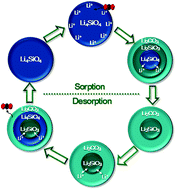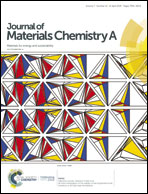Recent advances in lithium containing ceramic based sorbents for high-temperature CO2 capture
Abstract
Recently, lithium containing ceramic based high-temperature CO2 sorbents have received tremendous attention due to their high CO2 capture capacity, low regeneration temperatures, and relatively high stability. With the rapid development of these promising CO2 capturing materials, a timely review is highly demanded. In this contribution, we critically summarize the performance of all types of lithium containing ceramics including lithium silicates, zirconates, titanates, aluminates, ferrites, cuprates, bismuthates and borates for capturing CO2 at high temperatures. For these CO2 sorbents, all possible schemes for improving their CO2 capture capacity, kinetics, and cycling stability have been comprehensively reviewed. Their potential applications in high-temperature post-combustion CO2 capture from stationary flue gases, sorption enhanced methane steaming reforming, sorption enhanced alcohol reforming, and CO oxidation coupled with subsequent CO2 capture processes are compared and discussed. We hope this work can inspire and guide researchers from a wide range of backgrounds and help pave the way for major breakthroughs in both fundamental studies and industrial applications in this field.

- This article is part of the themed collection: Recent Review Articles


 Please wait while we load your content...
Please wait while we load your content...